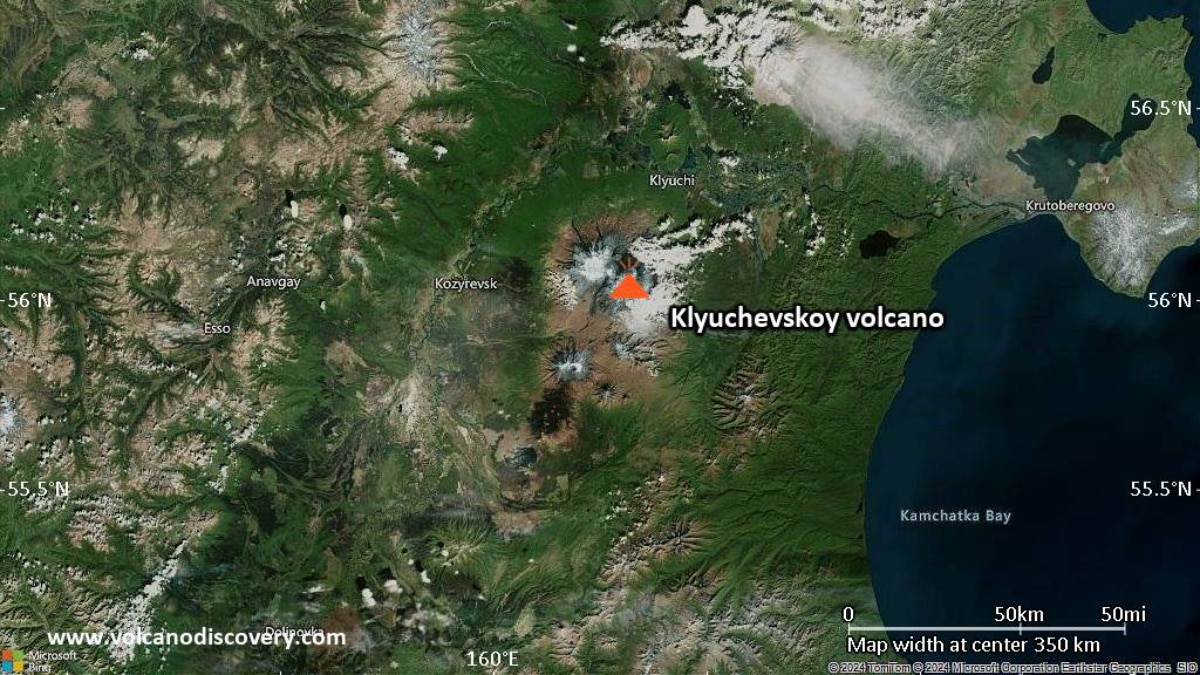200 Earthquakes In A Day Trigger Volcanic Eruption Alert In Russia: Klyuchevskoy Forms New Cone
Russia’s volatile Kamchatka Peninsula has once again reminded the world of its seismic ferocity. A new volcanic cone has formed on the Klyuchevskoy volcano following a barrage of over 200 earthquakes recorded within a single day. The tremors came in the wake of a powerful undersea earthquake measuring 8.8 magnitude that struck off Russia’s eastern coast, triggering tsunami alerts across the Pacific and prompting mass evacuations.
The new cone emerged as volcanic material accumulated around an opening in Earth’s crust, forming the familiar triangular structure typical of explosive volcanic landscapes. Klyuchevskoy, the highest active volcano in Eurasia, now has a fresh crater to add to its turbulent history.

The Tokyo-based Volcanic Ash Advisory Center (VAAC) also flagged volcanic activity at Klyuchevskoy. Satellite data from Himawari-9 indicated volcanic ash reaching flight level 200, with plumes moving eastward at a wind speed of 16 knots. The advisory noted: “VA at 20250730/0230Z FL200 EXTD E MOV 16KT REPORTED.” However, the ash cloud could not be clearly identified in the satellite imagery, and no further 6-hour or 12-hour forecasts were available at the time of reporting.
A Volcanic Chain Reaction?
Experts have long acknowledged the tectonic volatility of Kamchatka, where seismic and volcanic activities are closely linked. While no direct cause-and-effect has been confirmed between the 8.8 magnitude quake and the volcanic cone’s formation, the near-simultaneous occurrences underscore the peninsula’s precarious geological state.
Japan Hit, US and Island Nations on High Alert
The undersea quake, upgraded from an initial 8.0 to 8.8 by the US Geological Survey (USGS), struck at a depth of 19.3 kilometres and about 125 kilometres southeast of Petropavlovsk-Kamchatsky.
In its aftermath, tsunami warnings rippled across the Pacific, including alerts for Japan, the United States, the Philippines, Palau, and several island territories.
Tsunami waves first reached Japan’s northernmost island, Hokkaido, and parts of coastal Russia. So far, the waves have measured between 30 and 40 centimetres (roughly 1 to 1.3 feet), significantly lower than the earlier forecast of up to 3 metres (nearly 10 feet).
Russia’s Emergency Minister for the region, Andrey Lebedev, issued a stark advisory urging coastal residents to stay inland. “Everyone must move away from water peaks,” he cautioned, as waves reaching up to 4 metres crashed along parts of the Kamchatka shoreline.
The US Tsunami Warning System projected waves exceeding 3 metres for Russia’s Pacific coast and parts of the Hawaiian Islands. Other nearby nations, including the Philippines, the Marshall Islands, Chuuk, and Kosrae, were expected to face smaller waves ranging from 0.3 to 1 metre.
No Serious Casualties, But Heavy Precautions Continue
Despite the quake’s intensity and widespread alarm, Russian authorities confirmed no major injuries or fatalities. However, several buildings sustained structural damage. Emergency response teams were swiftly deployed and evacuation orders executed across high-risk zones.
As the Pacific braces for aftershocks and residual tsunami effects, scientists continue to monitor the Klyuchevskoy volcano for further eruptions. For now, Kamchatka stands as a vivid reminder of nature’s unpredictable, interconnected power.
world